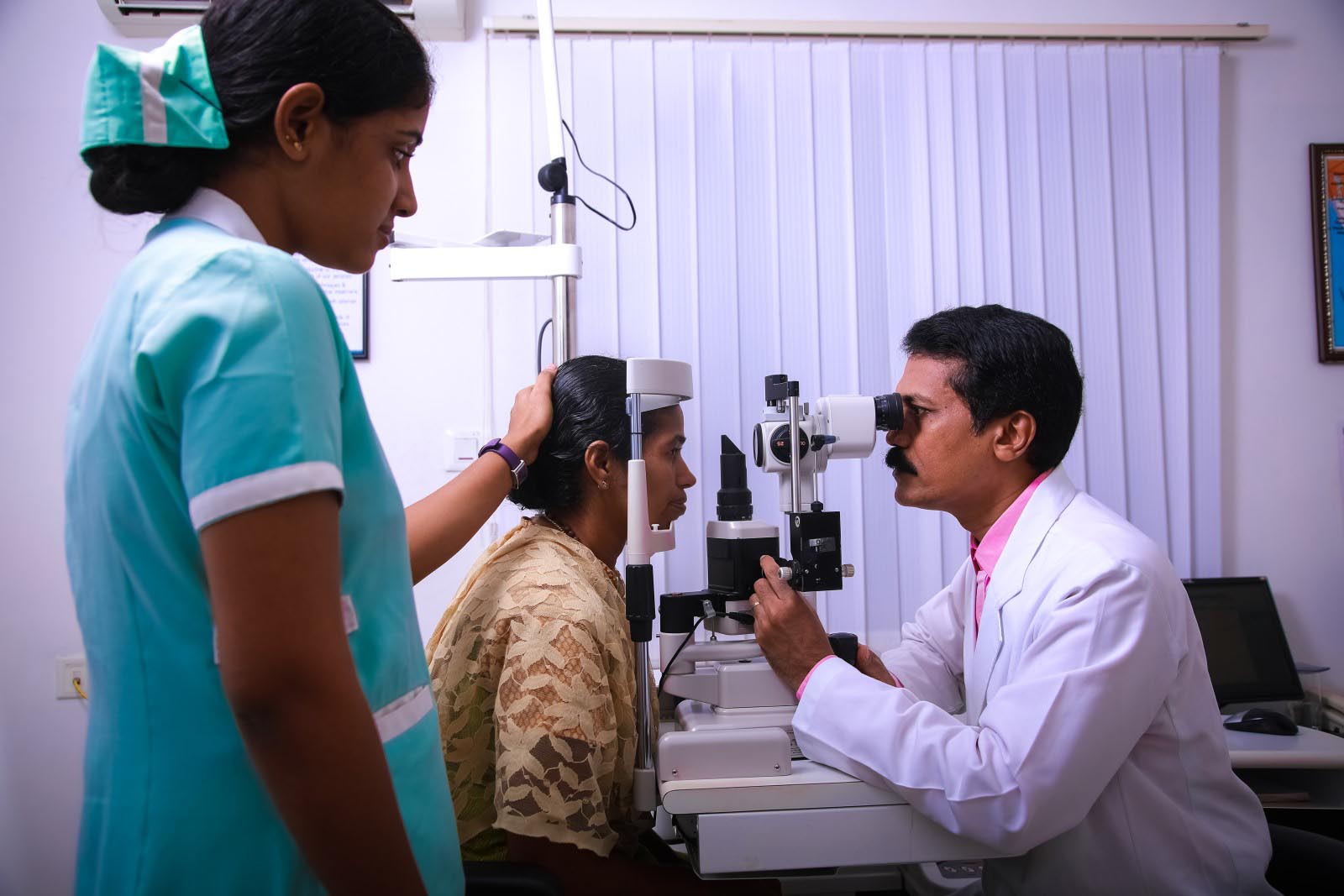
What is Glaucoma ?
Glaucoma is a group of eye disorders that lead to progressive damage to the optic nerve. People with glaucoma can lose nerve tissue, resulting in vision loss. That’s why ivision doctors treat this condition as an emergency situation. Glaucoma is one of the largest cause of complete vision lose in world population.
The optic nerve is a bundle of about 1 million individual nerve fibers that transmits the visual signals from the eye to the brain. In the most common form of glaucoma, primary open-angle glaucoma, the fluid pressure inside the eye increases. This increase in pressure may cause progressive damage to the optic nerve and loss of nerve fibers. Vision loss may result. Advanced glaucoma may even cause blindness.
Not everyone with high eye pressure will develop glaucoma, and some people with normal eye pressure will develop glaucoma. When the pressure inside a person's eye is too high for a particular optic nerve, whatever that pressure measurement may be, glaucoma will develop. Because of this risk you need a regular yearly checkup for your eyes to find out early glaucoma, you can use ivision regular checkup planes or free camps near by you.
The most common type of glaucoma (open-angle glaucoma) often has no symptoms other than slow vision loss. Angle-closure glaucoma, although rare, is a medical emergency and its symptoms include eye pain with nausea and sudden visual disturbance. Treatment includes eye drops, medication and surgery.
Glaucoma is the second-leading cause of blindness in the world it most often occurs in people over age 40; although an infant (congenital) form of glaucoma exists. People with a family history of glaucoma, African Americans over the age of 40 and Hispanics over the age of 60 have an increased risk of developing glaucoma. Other risk factors include thinner corneas, chronic eye inflammation and taking medications that increase the pressure in the eyes. The most common form of glaucoma, primary open-angle glaucoma, develops slowly and usually without any symptoms. Many people are not aware they have the condition until they have significant vision loss. Initially, glaucoma affects peripheral or side vision, but it can advance to central vision loss. If left untreated, glaucoma can lead to significant vision loss in both eyes, and may even lead to blindness. A less common type of glaucoma, acute angle-closure glaucoma, usually occurs abruptly due to a rapid increase of pressure in the eye. Its symptoms may include severe eye pain, nausea, and redness in the eye, seeing halos or colored rings around lights and blurred vision. This is an emergency condition in which severe vision loss can occur quickly; see your optometrist immediately.
Glaucoma cannot currently be prevented. But if it is diagnosed and treated early, it can usually be controlled. Medication or surgery can slow or prevent further vision loss.
However, vision already lost to glaucoma cannot be restored. That is why the American Optometric Association recommends an annual dilated eye examination for people at risk for glaucoma. Depending on your specific condition, your doctor may recommend more frequent examinations.
Our Glaucoma Specialities
Ivision medical team will advice disc imaging to compare the ability of optic disc and retinal nerve fiber layer (RNFL) imaging to discriminate perimetrically unaffected eyes of glaucoma patients from normal eyes.To compare the ability of optic disc and retinal nerve fiber layer (RNFL) imaging to discriminate perimetrically unaffected eyes of glaucoma patients from normal eyes.
Humphrey field analyser (HFA), Ivision medical team will advice this tool for measuring the human visual field, it is used by optometrists, orthoptists and ophthalmologists, particularly for detecting monocular visual field. The results of the Analyser identify the type of vision defect. Therefore, it provides information regarding the location of any disease processes or lesion(s) throughout the visual pathway. This guides and contributes to the diagnosis of the condition affecting the patient's vision. These results are stored and used for monitoring the progression of vision loss and the patient's condition.
Peripheral Iridotomy: A Laser Procedure for Narrow Angles. ... On the other hand, in angle-closure glaucoma or in patients at risk for this condition, another type of laser surgery (laser iridotomy) is the preferred method of treatment right from the beginning.
Ivision medical team will advice this Goldmann Applanation Tonometer as an instrument that is based on Imbert-Fick law. It is considered to be the gold standard instrument for measurement of Intraocular pressure in galucoma.





©Microclouds 2018 . All rights reserved By Ivision Eye Hospitals.



